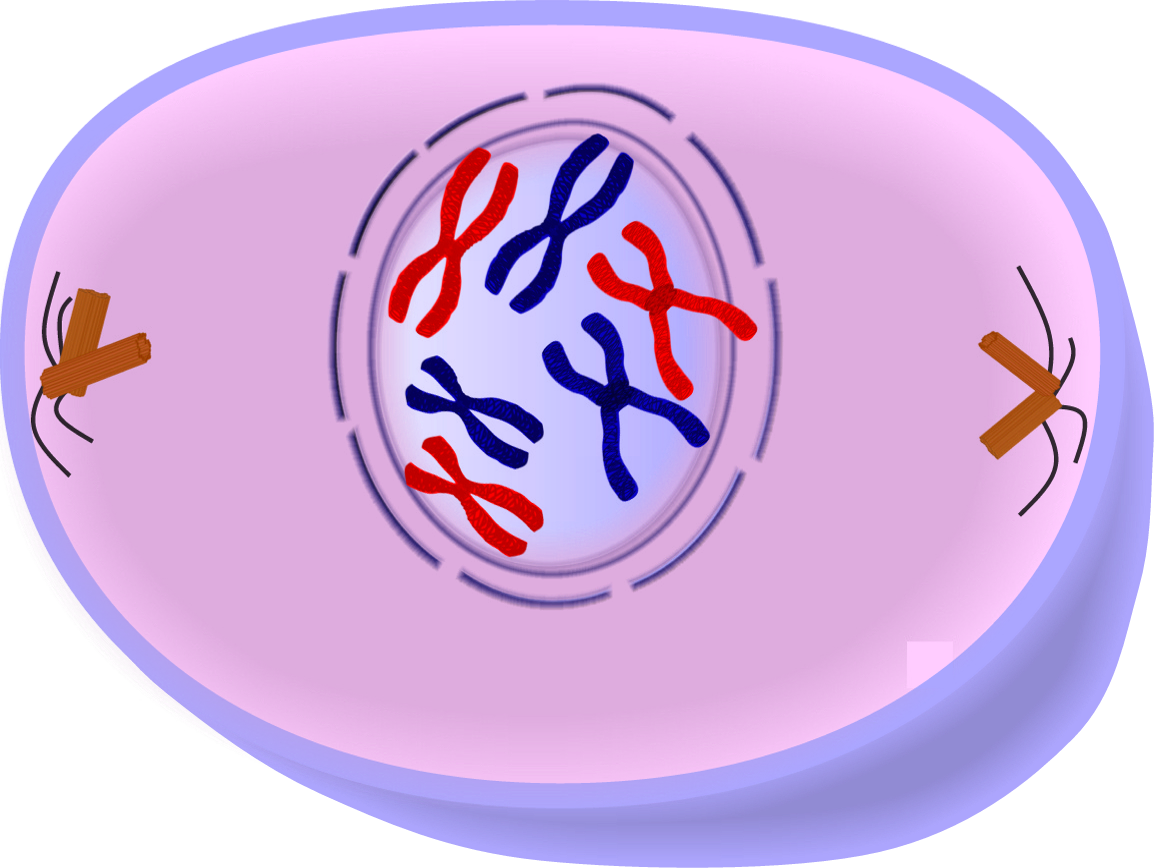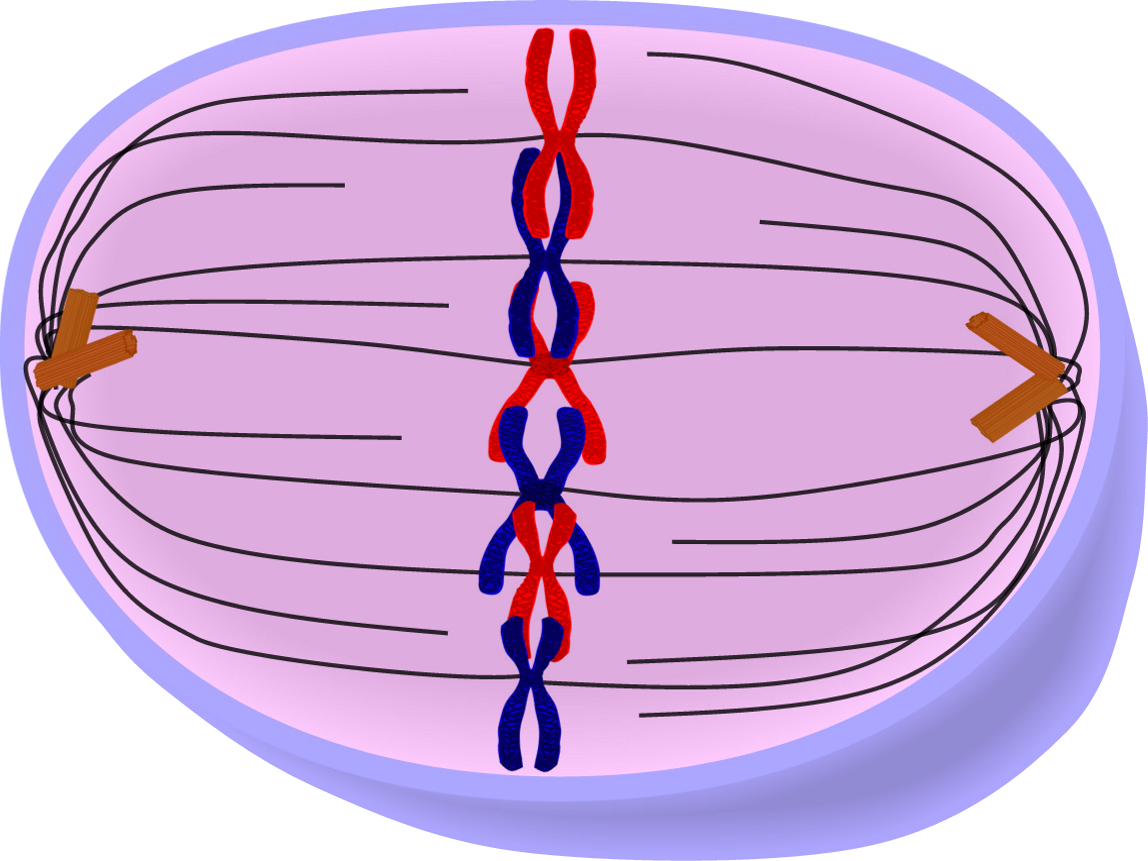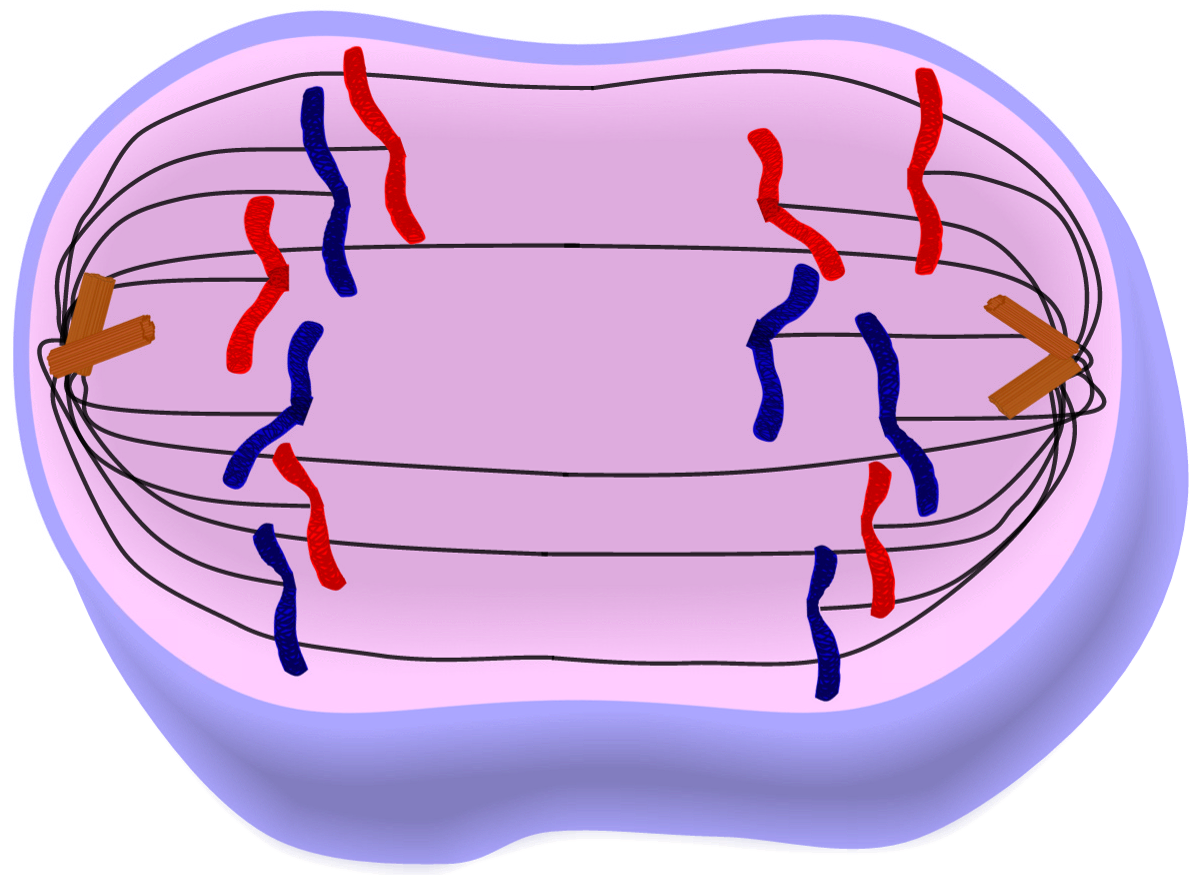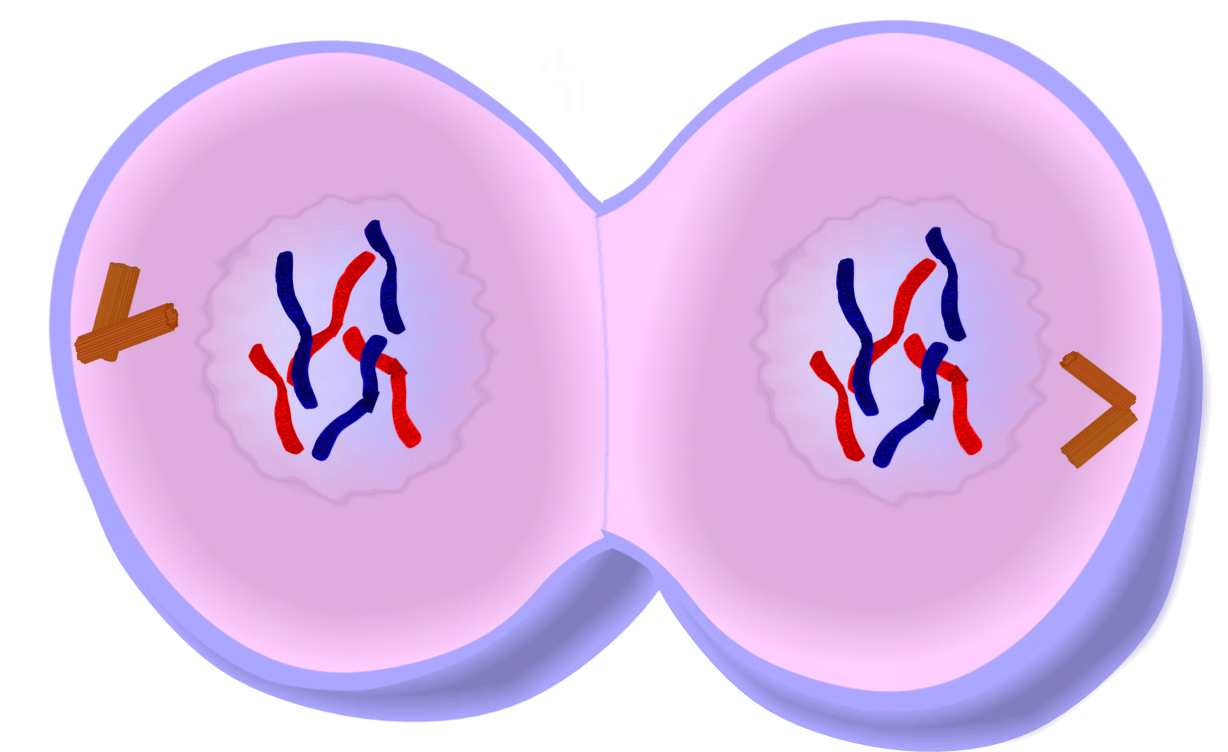mirror of
https://gitlab.com/magicalsoup/Highschool.git
synced 2025-10-22 19:21:37 -04:00
11 KiB
11 KiB
Unit 2: Biology
Cellular Biology
A person contains roughly 100 trillion cells - Cells are roughly 20
μm (micrometre, 10-6 m), around 250 cells /
cm
Cell Theory
- All living things are composed of cells
- Cells are the basic units of living organisms
- All cells came from pre-existing cells
Eukaryotic versus Prokaryotic Cells
Prokaryotic cell: Meaning before/lacking nucleus
Eukaryotic cell: Means complete nucleus
| Factors | Prokaryotic | Eukaryotic |
|---|---|---|
| DNA | In nucleoid region | Usually in membrane-bound nucleus |
| Size | Usually smaller | Usually larger |
| Organelles | Not membrane-bound, smaller | Membrane-bound, more complex |
| Organization | Usually singlecelled | Often form multicellular organisms |
| Metabolism | May not need oxygen | Usually need oxygen |
Cellular Organelles
Business Analogy
| In a business | In a cell |
|---|---|
| Building | Cytoplasm & Cytoskeleton |
| Department Head | Organelles |
| Boss | DNA |
| Workers | Ribosomes & Enzymes |
| Waste management | Lysosomes |
| Storage | Vacuoles |
| Powerhouse | Chloroplasts & Mitochondria |
| Security gate | Cell membrane controls entrance and exit from the cell |
| Transportation Department | IMPORT: Cell membranes and vesicles, INTERNAL: Endoplasmic reticulum & vesicles, EXPORT: Golgi apparatus, vesicles, and cell membrane |
Cell Membrane
- Controls what substances enter/leave the cell
selectively via various receptors/osmosis
- Allows nutrients to enter
- Allows waste products to leave (removal of waste)
- Surrounds and holds other organelles in cell
- Interact with outside chemicals (e.g., hormones)
- Transports food and nutrients into the cell
Nucleus
- Is the control center of the cell
- Holds deoxyribonucleic acid (DNA) in form of
chromatin- DNA is a double helix containing genes
Genes: any section of DNA that contains a full set of instructions to make either RNA or a protein, found in nucleus
Chromatin: is DNA wrapped tightly in protein
- DNA is a double helix containing genes
Chromosomes: are even more tightly wrappedchromatinused in cell division only, formed whenDNAcondenses inmitosis- Surrounded by a double membrane
- Substances enter and exit the nucleus via
nuclear pores.Nuclear poresare holes in the membrane that allowproteinsandnucleic acidsinto thecytoplasm - Messenger RNA (mRNA) is encoded from DNA and sent to
ribosomesto produce proteins - Humans have ~2 meters of genes per cell per nucleus tightly wrapped
Nucleolus
- Dense region of DNA located in the nucleus
- This area of DNA is specially for ribosomal DNA (rDNA), or DNA used
to code
ribosomes, enzymes that assemble proteins - Produce “large” and “small” subunits of
ribosomes, which either form completeribosomesincytosolor mix withendoplasmic reticulum, formingrough endoplasmic reticulum(RER)
Cytoplasm & Cytosol
Cytosolis the fluid cells contain- All organelles are suspended in
cytosol Cytoplasmis thecytosolalong with everything in a cell, excluding the nucleus
Endoplasmic Reticulum
- The endoplasmic reticulum is a network of
tubulesand flattened sacs with a rough appearance because of the presence ofribosomeson the surface - Network of tubules and flattened sacs
- Transports proteins via cytoskeleton in vesicles
Specific to Rough ER
- Appears “rough” due to the
ribosomesattached to its outer surface - Located directly adjacent and attached to nucleus
- Located next to
Golgi apparatus Ribosomesin rough ER synthesize proteins- Transports synthesized proteins to
Golgi apparatusfor packaging and distribution - About half the cell’s proteins are produced here
- Transports synthesized proteins to
- Folds, fixes and modifies both newly-created and pre-existing proteins somewhat like proof-reading
Specific to Smooth ER
- Does not synthesize proteins
- Appears “smooth” due to lack of
ribosomes - Located directly adjacent and attached to nucleus
- Synthesizes lipids (fats, e.g., cholesterol)
- Metabolises carbohydrates
Golgi Apparatus
- Also known as Golgi body, Golgi complex, etc.
- Receives, modifies and transports proteins that were produced by the rough ER
- Packages proteins into
vesiclesand sends themcell membranefor export
Lysosome
- Spherical vesicle that containing
enzymes - Digests and kills foreign matter which is then
excreted
- E.g., white blood cells use lysosomes to kill bacteria then spit it out
- Digests and breaks down old and unused material/non-functional organelles as needed
- If lysosome ruptures everything dies, hence they are known as “suicude sacs”
Mitochondria
- Singular form is “mitochondrion”
- Contains an inner and outer membrane
- Processes glucose + oxygen gas to form carbon dioxide + adenosine
triphosphate (ATP)
- ATP allows proteins to do things (e.g., spend 1 ATP break 1 molecule)
- ATP cannot be stored
- ATP is needed for daily function of the cell
Cytoskeleton
- Made of protein filaments
- Maintains and changes cell
structure, much like a human skeleton + muscular system
- Moves cells
- Modifies and adjusts cell structure as needed
- Chemicals can travel along
cytoskeleton, e.g.,organelles,vesicles, etc.
Organelles specific to animal cells
- Centrioles and centrosomes
- Lysosomes
Centrosomes
- Made of same protein as
cytoskeleton - Crucial to mitosis in animal cells
- Create and manipulate spindle fibres during mitosis in animal cells
Lysosomes
- Explained before.
Organelles specific to plant cells
- Cell wall
- Chloroplast
- Central Vacuole
Cell wall
- Provides structure and prevents cell rupture
- A more stronger, thicker, rigit version of the
cell membrane - Made of cellulose (type of sugar)
- Also present in most bacteria, fungi, and protists
- The antibotic penicillin works by destroying the cell walls of bacteria, killing it
Chloroplast
- The solar panel of the plant cell
- Conducts photosynthesis
- All chlorophyll is located in chloroplasts
- Looks green
- Parts of the plant that do not photosynthesize do not have chloroplasts
Central Vacuole
- Extremely large, may take up to 90% of volume in cell
- Contains water
- Maintains
turgorpressure against cell wall (pushes against cell wall in all directions) - Maintains cell shape and resistance
- Plant cells that lack turgor pressure (e.g., celery left in fridge) become flaccid
Cell Division
Purpose
1. Reproduction
- Single-cellular organisms reproduce via division asexually
- Multicellular organisms reproduce via combining two germ cells (“sex
cells”) that contain half the DNA each of two organisms
- This is sexual
2. Growth
- Cells have maximum size before transportation of substances within
cell becomes inefficient, due to larger
cells decreasing efficiency of
diffusion - Cells transport chemicals (e.g., nutrients) via
diffusion, this limits cell size - The only way to maintain proper function and get bigger is to add more cells
3. Repair
- Organisms need to repair cells to stay alive and maintain proper health
- Millions of cells are replaced everyday
- Cells naturally die and need to be replaced
- e.g., red blood cells, hair cells, skin, injuries, broken bones
Cell cycle
- Interphase
- Large majority of a cell’s time is spent in interphase
- G1: (normal growth and function),
- Prepare for cell divison
- S: Replication of DNA
- G2: Replication of organelles
- Checkpoints
- Cells check various things before progressing through various stages in interphase
- Causes of stopping via checkpoints include damaged DNA, not replicated DNA, lack of nutrients for cell growth, and/or signals from other cells
- Mitosis
- Occurs only in eukaryotic cells
- P-MAT: Prophase, Metaphase, Anaphase, Telophase
- Division of the nucleus
- Cytokinesis
- cell division
- The parent cell splits into two daughter cells
- G0
- Cell no longer divides (“cell cycle arrest”)
- Outside of cell cycle
Mitosis
Chromatid: Supercoiled DNA, only visible during mitosis, cannot be read without unwinding, similar to compressed zip fileChromosome: Two identical “sister chromatids” held together in centre bycentromere, or one sister chromatid after anaphaseCentromere: Proteins sticking sister chromatids- PMAT (prophase, metaphase, anaphase, telophase)
- Division of the nucleus
Cytokinesis
- Cell division
- Cell splits completely to two daughter cells
- In animal cells: Cell membrane pulled inward by cytoskeleton
- “Pinches in” along equator of cell, forming “cleavage furrow”
- In plant cells: Golgi apparatus produces and sends vesicles to centre of plant cell “cell plate” to make new cell wall and membrane between daughter cells
Cell Specialization
Zygote: A single-celled organism formed from the fertilization of an egg by a sperm cell, is a totipotent stem cell- A cell’s position in the
gastrula(outer, middle, inner layer) will determine the fate of the cell, or its potiental. - Chemical signals from other cells will also determine activated genes that lead to specialisation
- (LOCATION LOCATION LOCAION!)
- Specialisation is determined by reading only certain genes
Stem Cells
- They are an unspecialized cell that has the potential to become one of several types of cells.
- Can either divide to two stem cells or one stem cell and one specialised cell
- Specialised cells generally do not divide




